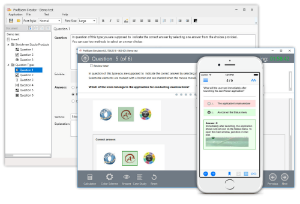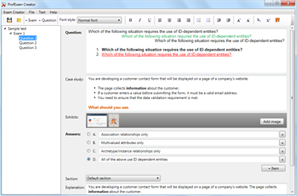File Info
| Exam | Salesforce Certified Business Analyst |
| Number | Certified-Business-Analyst |
| File Name | Salesforce.Certified-Business-Analyst.VCEplus.2025-03-25.169q.vcex |
| Size | 357 KB |
| Posted | Mar 25, 2025 |
| Download | Salesforce.Certified-Business-Analyst.VCEplus.2025-03-25.169q.vcex |
How to open VCEX & EXAM Files?
Files with VCEX & EXAM extensions can be opened by ProfExam Simulator.
Coupon: MASTEREXAM
With discount: 20%
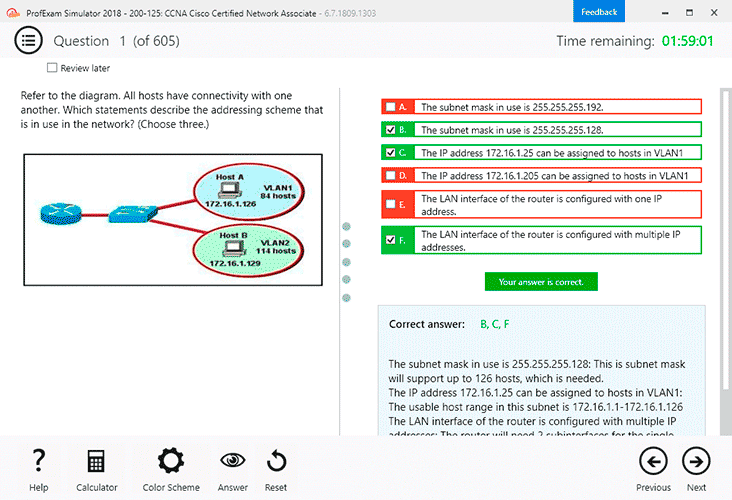

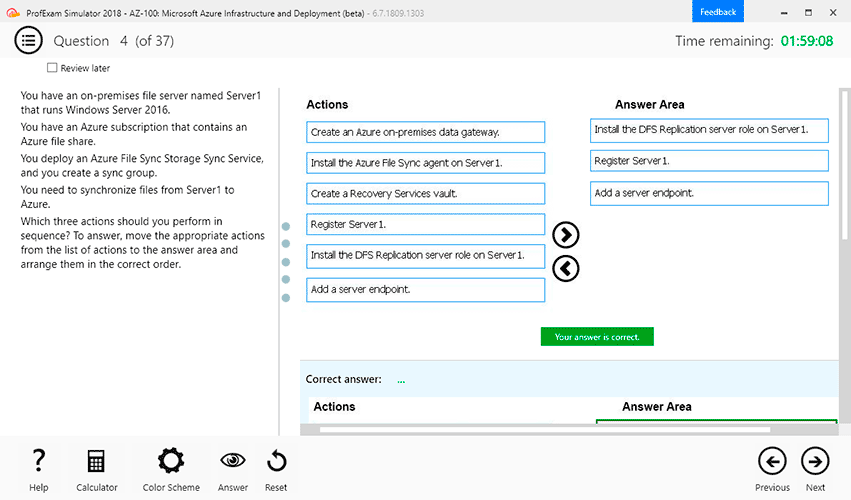
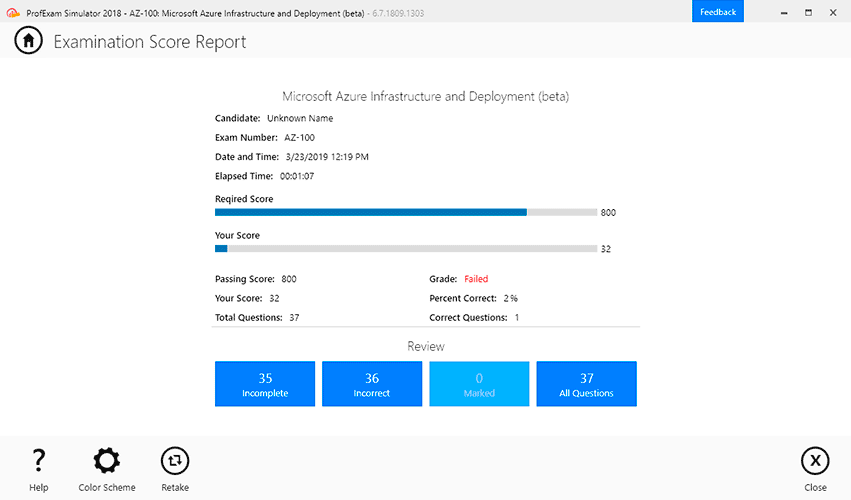
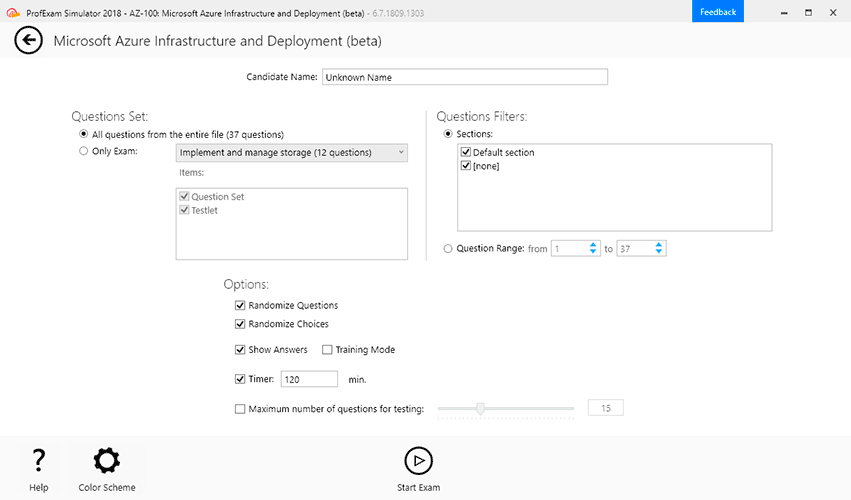

Demo Questions
Question 1
Northern Trail Outfitters launched a new feature on its Experience Cloud site to allow customers to compare features of similar products ahead of the major promotional event of the year. The user acceptance testing (UAT) passed successfully; however, many customers complained of issues when accessing the site.
What did the business analyst overlook before recommending that the release go live?
- The AT should have been performed with enough time to resolve bugs in the new feature,
- The UAT should have been performed with both peak load and average load simulation.
- The UAT should have been performed by customers who are familiar with the products.
Correct answer: B
Question 2
The sales team at Universal Containers has concerns that the process for distributing new leads is too slow. The VP of sales has engaged a business analyst (BA) to help map out a process to distribute new leads quickly. The BA sets up a meeting with stakeholders and learns a stakeholder already has a solution in mind.
What should the BA do next?
- Implement the solution now to save time in the planning phase.
- Ask the stakeholder to demo their solution to the project team.
- Gather requirements and then note the proposal solution.
Correct answer: C
Question 3
A business analyst (BA) uncovered a number of issues communicated by stakeholders in a Sales Cloud discovery session.
Which issue should concern the BA most?
- The previous implementation partner neglected to do a knowledge transfer of the final solution.
- The support organization still needs to be trained on how to use Sales Cloud.
- The system admins note a fair amount of technical debt without having the time or expertise to address it.
Correct answer: C
Explanation:
The issue that should concern the business analyst most is that the system admins note a fair amount of technical debt without having the time or expertise to address it. Technical debt is the accumulated cost or consequence of suboptimal design, development, or maintenance decisions on a software system. Technical debt can negatively affect the performance, security, usability, and maintainability of a software system, as well as increase the complexity and risk of future changes or enhancements. Technical debt can also reduce user satisfaction and adoption, as well as business value and return on investment. Therefore, the business analyst should be concerned about the technical debt in the Sales Cloud implementation and work with the system admins and other stakeholders to identify, prioritize, and resolve it.Reference: https://trailhead.salesforce.com/content/learn/modules/salesforce-business-analyst-certification-prep/project-initiation The issue that should concern the business analyst most is that the system admins note a fair amount of technical debt without having the time or expertise to address it. Technical debt is the accumulated cost or consequence of suboptimal design, development, or maintenance decisions on a software system. Technical debt can negatively affect the performance, security, usability, and maintainability of a software system, as well as increase the complexity and risk of future changes or enhancements. Technical debt can also reduce user satisfaction and adoption, as well as business value and return on investment. Therefore, the business analyst should be concerned about the technical debt in the Sales Cloud implementation and work with the system admins and other stakeholders to identify, prioritize, and resolve it.
Reference: https://trailhead.salesforce.com/content/learn/modules/salesforce-business-analyst-certification-prep/project-initiation
Question 4
The technical team at Cloud Kicks is trying to deliver one of its Salesforce customizations. The business analyst (BA) has been asked to put assignments, test plans, decisions, and milestones in writing and share this document with stakeholders so there is less potential for confusion.
Which tactical document should the BA use to capture features?
- Business analysis plan
- User Acceptance Test plan
- Release plan
Correct answer: C
Explanation:
The tactical document that the business analyst should use to capture features is a release plan. A release plan is a document that outlines the scope, schedule, resources, and deliverables of a project or enhancement that will be released to production. A release plan helps to communicate and align with stakeholders on what features will be delivered, when they will be delivered, how they will be delivered, and who will be involved in delivering them. A release plan also helps to manage expectations, risks, dependencies, and changes throughout the project lifecycle.Reference: https://trailhead.salesforce.com/content/learn/modules/salesforce-business-analyst-certification-prep/project-planning The tactical document that the business analyst should use to capture features is a release plan. A release plan is a document that outlines the scope, schedule, resources, and deliverables of a project or enhancement that will be released to production. A release plan helps to communicate and align with stakeholders on what features will be delivered, when they will be delivered, how they will be delivered, and who will be involved in delivering them. A release plan also helps to manage expectations, risks, dependencies, and changes throughout the project lifecycle.
Reference:
https://trailhead.salesforce.com/content/learn/modules/salesforce-business-analyst-certification-prep/project-planning
Question 5
Universal Containers (UC) has low adoption rate of its Salesforce solution. UC has hired a new vendor to overhaul its documentation and train) ng process. needs a business analyst to facilitate this transition. Which of set if actions are the most effective business needs from stakeholders?
- send surveys to collect feedback; observe end 'Users; whiteboard incoming requests; and store communication in a centralized location.
- Mock up a design; build a prototype; demonstrate functionality to end users; and collect feedback for Changes.
- Use multiple forms of communication; build trust; show empathy; and get commitment for next
Correct answer: C
Explanation:
The set of actions that are the most effective for collaborating with key stakeholders are to use multiple forms of communication; build trust; show empathy; and get commitment for next steps. These actions help to establish and maintain positive and productive relationships with key stakeholders who have an interest or influence in the project outcome. Using multiple forms of communication helps to ensure clarity, consistency, and timeliness of information and feedback among stakeholders. Building trust helps to foster mutual respect, honesty, and reliability among stakeholders. Showing empathy helps to understand and acknowledge the needs, expectations, preferences, pain points, goals, etc. of stakeholders. Getting commitment for next steps helps to ensure alignment and engagement among stakeholders on the project goals, scope, roles, and responsibilities.Reference: https://trailhead.salesforce.com/content/learn/modules/salesforce-business-analyst-certification-prep/stakeholder-management The set of actions that are the most effective for collaborating with key stakeholders are to use multiple forms of communication; build trust; show empathy; and get commitment for next steps. These actions help to establish and maintain positive and productive relationships with key stakeholders who have an interest or influence in the project outcome. Using multiple forms of communication helps to ensure clarity, consistency, and timeliness of information and feedback among stakeholders. Building trust helps to foster mutual respect, honesty, and reliability among stakeholders. Showing empathy helps to understand and acknowledge the needs, expectations, preferences, pain points, goals, etc. of stakeholders. Getting commitment for next steps helps to ensure alignment and engagement among stakeholders on the project goals, scope, roles, and responsibilities.
Reference:
https://trailhead.salesforce.com/content/learn/modules/salesforce-business-analyst-certification-prep/stakeholder-management
Question 6
Universal Containers wants to streamline a complex business process. The business analyst (BA) assigned to the Service Cloud project is creating a business process map of the existing process. The BA is having difficulty documenting the process because there is disagreement among the stakeholders about the steps that are being followed. Which recommendation should the BA make to help the stakeholders reach agreement about the process?
- Refer to the Responsible, Accountable, Consulted, informed (RACI) chart to determine who is accountable.
- Focus on the inputs and outcomes of the current process
- Brainstorm ideas to make the process more efficient.
Correct answer: B
Explanation:
This answer suggests focusing on the inputs and outcomes of the current process as a recommendation that the BA should make to help the stakeholders reach agreement about the process after creating a business process map of the existing process for streamlining a complex business process at Universal Containers. Inputs are the resources or information that are needed to start or perform a process. Outcomes are the results or outputs that are produced or delivered by a process. Focusing on the inputs and outcomes of the current process can help the BA to identify and align what is required and expected from each stakeholder involved in the process, and to resolve any discrepancies or conflicts among them.Reference: https://trailhead.salesforce.com/en/content/learn/modules/salesforce-business-analyst-quick-look/use-process-mapping-to-understand-your-business This answer suggests focusing on the inputs and outcomes of the current process as a recommendation that the BA should make to help the stakeholders reach agreement about the process after creating a business process map of the existing process for streamlining a complex business process at Universal Containers. Inputs are the resources or information that are needed to start or perform a process. Outcomes are the results or outputs that are produced or delivered by a process. Focusing on the inputs and outcomes of the current process can help the BA to identify and align what is required and expected from each stakeholder involved in the process, and to resolve any discrepancies or conflicts among them.
Reference:
https://trailhead.salesforce.com/en/content/learn/modules/salesforce-business-analyst-quick-look/use-process-mapping-to-understand-your-business
Question 7
The sales team is learning a new sales methodology. Management wants to align Salesforce opportunities with the methodology.
What is the first step a business analyst should take to begin overhauling the Opportunity object?
- Understand the current business process.
- Configure stages in Salesforce.
- Create new reports and dashboards.
Correct answer: A
Explanation:
The first step that the business analyst should take to begin overhauling the Opportunity object is to understand the current business process. This is because understanding the current business process helps to establish a baseline for measuring the current state of performance, identify pain points and opportunities for improvement, and align with the desired business outcomes. The business analyst should use techniques such as interviews, observations, surveys, or process mapping to understand how users currently use Salesforce opportunities and what challenges or gaps they face.Reference: https://trailhead.salesforce.com/content/learn/modules/salesforce-business-analyst-certification-prep/business-process-mapping The first step that the business analyst should take to begin overhauling the Opportunity object is to understand the current business process. This is because understanding the current business process helps to establish a baseline for measuring the current state of performance, identify pain points and opportunities for improvement, and align with the desired business outcomes. The business analyst should use techniques such as interviews, observations, surveys, or process mapping to understand how users currently use Salesforce opportunities and what challenges or gaps they face.
Reference:
https://trailhead.salesforce.com/content/learn/modules/salesforce-business-analyst-certification-prep/business-process-mapping
Question 8
Cloud Kicks (CK) recently decided to transition its business from spreadsheets to a Salesforce solution. CK leaders are excited about the capabilities of Salesforce. Each leader has different ideas about how the platform should be implemented. CK has hired a business analyst (BA) to help define and manage the implementation.
What should the BA do in the first discovery meeting with stakeholders?
- Collaborate with stakeholders to examine and define CK's purpose, customers, metrics, and overall business to inform project direction and vision.
- Discuss and document specific pain points in existing processes to inform future project requirements.
- Preview potential Salesforce solutions and collect feedback from stakeholders on each option to inform the direction of the project.
Correct answer: A
Explanation:
The business analyst should do in the first discovery meeting with stakeholders is to collaborate with stakeholders to examine and define CK's purpose, customers, metrics, and overall business to inform project direction and vision. Discovery is a phase of a Salesforce project that aims to understand the current state of a business, identify its problems or needs, and define its goals or desired outcomes. In the first discovery meeting, the business analyst should work with stakeholders to establish a common understanding of CK's business context, such as its mission, vision, values, customers, competitors, performance indicators, etc. This can help the business analyst align stakeholders on a shared vision and strategy for the Salesforce implementation.Discussing and documenting specific pain points in existing processes may be part of discovery, but not in the first meeting. The business analyst should first understand the big picture of CK's business before diving into the details of its processes.Previewing potential Salesforce solutions and collecting feedback from stakeholders may be part of discovery, butnot in the first meeting. The business analyst should first understand the problems or needs of CK's business before proposing any solutions.Reference: https://trailhead.salesforce.com/content/learn/modules/salesforce-business-analyst-certification-prep/customer-discovery https://trailhead.salesforce.com/content/learn/modules/salesforce-business-analyst-certification-prep/collaboration-with-stakeholders The business analyst should do in the first discovery meeting with stakeholders is to collaborate with stakeholders to examine and define CK's purpose, customers, metrics, and overall business to inform project direction and vision. Discovery is a phase of a Salesforce project that aims to understand the current state of a business, identify its problems or needs, and define its goals or desired outcomes. In the first discovery meeting, the business analyst should work with stakeholders to establish a common understanding of CK's business context, such as its mission, vision, values, customers, competitors, performance indicators, etc. This can help the business analyst align stakeholders on a shared vision and strategy for the Salesforce implementation.Discussing and documenting specific pain points in existing processes may be part of discovery, but not in the first meeting. The business analyst should first understand the big picture of CK's business before diving into the details of its processes.Previewing potential Salesforce solutions and collecting feedback from stakeholders may be part of discovery, but
not in the first meeting. The business analyst should first understand the problems or needs of CK's business before proposing any solutions.
Reference:
https://trailhead.salesforce.com/content/learn/modules/salesforce-business-analyst-certification-prep/customer-discovery
https://trailhead.salesforce.com/content/learn/modules/salesforce-business-analyst-certification-prep/collaboration-with-stakeholders
Question 9
During the discovery phase of a Salesforce project, which types of analyses should a business analyst typically perform?
- Financial, Technical, Operational
- Technical, Stakeholder, Enterprise
- Enterprise, Strategy, Stakeholder
Correct answer: C
Explanation:
The types of analyses that a business analyst typically performs during the discovery phase of a Salesforce project are enterprise analysis, strategy analysis, and stakeholder analysis. Enterprise analysis is a technique that examines and evaluates the internal and external factors that affect a business or organization. It can help the business analyst understand the strengths, weaknesses, opportunities, and threats (SWOT) of a business or organization. Strategy analysis is a technique that defines and clarifies the goals, objectives, scope, and success criteria of a project or initiative. It can help the business analyst align the project or initiative with the vision and mission of a business or organization. Stakeholder analysis is a technique that identifies and evaluates the people who have an interest in or influence on a project or initiative. It can help the business analyst understand who are the key stakeholders, what are their roles and responsibilities, what are their needs and expectations, how they communicate and collaborate, etc. Financial analysis is a technique that assesses the costs and benefits of a project or initiative. It can help the business analyst justify or prioritize the project or initiative based on its return on investment (ROI) or net present value (NPV). Technical analysis is a technique that examines and evaluates the technical aspects of a project or initiative. It can help the business analyst understand the feasibility or complexity of a project or initiative based on its architecture or design. Operational analysis is a technique that analyzes and optimizes the processes and workflows of a business or organization. It can help the business analyst improve the efficiency or effectiveness of a business or organization based on its performance metrics or best practices. The types of analyses that a business analyst typically performs during the discovery phase of a Salesforce project are enterprise analysis, strategy analysis, and stakeholder analysis. Enterprise analysis is a technique that examines and evaluates the internal and external factors that affect a business or organization. It can help the business analyst understand the strengths, weaknesses, opportunities, and threats (SWOT) of a business or organization. Strategy analysis is a technique that defines and clarifies the goals, objectives, scope, and success criteria of a project or initiative. It can help the business analyst align the project or initiative with the vision and mission of a business or organization. Stakeholder analysis is a technique that identifies and evaluates the people who have an interest in or influence on a project or initiative. It can help the business analyst understand who are the key stakeholders, what are their roles and responsibilities, what are their needs and expectations, how they communicate and collaborate, etc. Financial analysis is a technique that assesses the costs and benefits of a project or initiative. It can help the business analyst justify or prioritize the project or initiative based on its return on investment (ROI) or net present value (NPV). Technical analysis is a technique that examines and evaluates the technical aspects of a project or initiative. It can help the business analyst understand the feasibility or complexity of a project or initiative based on its architecture or design. Operational analysis is a technique that analyzes and optimizes the processes and workflows of a business or organization. It can help the business analyst improve the efficiency or effectiveness of a business or organization based on its performance metrics or best practices.
Question 10
Cloud Kicks has an existing implementation of Salesforce. A business analyst (BA) wants to understand details about the Salesforce environment:
- Custom apps
- Active Salesforce Sites
- Active flows
- Custom tabs
- Visualforce pages
A Which path should the BA take to find this information?
- Review configuration settings.
- Conduct stakeholder interviews.
- Read business process documentation
Correct answer: A
Explanation:
The path that the business analyst should take to find information about custom apps, active Salesforce Sites, active flows, custom tabs, and Visualforce pages is to review configuration settings. Configuration settings are options or preferences that can be customized or modified in Setup. They can help the business analyst understand how Salesforce was implemented and what features or components were enabled or disabled. Custom apps, active Salesforce Sites, active flows, custom tabs, and Visualforce pages are examples of configuration settings that can be accessed or changed in Setup.Conducting stakeholder interviews may be a useful way to gather information about business needs, expectations, or feedback, but not about technical details or configuration settings. Reading business process documentation may be a useful way to understand how a business process works or flows, but not about technical details or configuration settings.certification-prep/business-process-mappingReference: https://trailhead.salesforce.com/content/learn/modules/salesforce-business-analyst-certification-prep/customer-discovery https://trailhead.salesforce.com/content/learn/modules/salesforce-business-analyst- The path that the business analyst should take to find information about custom apps, active Salesforce Sites, active flows, custom tabs, and Visualforce pages is to review configuration settings. Configuration settings are options or preferences that can be customized or modified in Setup. They can help the business analyst understand how Salesforce was implemented and what features or components were enabled or disabled. Custom apps, active Salesforce Sites, active flows, custom tabs, and Visualforce pages are examples of configuration settings that can be accessed or changed in Setup.Conducting stakeholder interviews may be a useful way to gather information about business needs, expectations, or feedback, but not about technical details or configuration settings. Reading business process documentation may be a useful way to understand how a business process works or flows, but not about technical details or configuration settings.
certification-prep/business-process-mapping
Reference:
https://trailhead.salesforce.com/content/learn/modules/salesforce-business-analyst-certification-prep/customer-discovery
https://trailhead.salesforce.com/content/learn/modules/salesforce-business-analyst-
Question 11
A new business analyst (BA) wants to follow the correct order of phases in the implementation lifecycle on a Salesforce project.
How should the BA approach the project?
- Analyze, build, operate, deliver
- Analyze, build, deliver, operate
- Analyze, operate, build, deliver
Correct answer: B
Explanation:
The correct order of phases in the implementation lifecycle on a Salesforce project is analyze, build, deliver, operate. In the analyze phase, the business analyst elicits requirements, maps business processes, and creates user stories. In the build phase, the development team configures and customizes Salesforce based on the user stories. In the deliver phase, the solution is tested, validated, and deployed to production. In the operate phase, the solution is monitored, maintained, and improved based on feedback and metrics.Reference: https://trailhead.salesforce.com/content/learn/modules/salesforce-business-analyst-certification-prep/get-started-with-salesforce-business-analyst-certification-prep The correct order of phases in the implementation lifecycle on a Salesforce project is analyze, build, deliver, operate. In the analyze phase, the business analyst elicits requirements, maps business processes, and creates user stories. In the build phase, the development team configures and customizes Salesforce based on the user stories. In the deliver phase, the solution is tested, validated, and deployed to production. In the operate phase, the solution is monitored, maintained, and improved based on feedback and metrics.
Reference:
https://trailhead.salesforce.com/content/learn/modules/salesforce-business-analyst-certification-prep/get-started-with-salesforce-business-analyst-certification-prep
